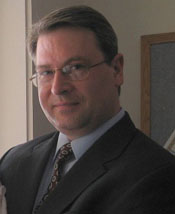News Headlines
Kudos
December 2019: Congratulations to Dr. Seth Cory for his graduation and his new position as a PBI Sales Representative for South Texas with VWR, part of Avantor. We will miss you, and wish you the best of luck with your future career!Fall 2019 Science Demo at the Chemistry Open House!
In celebration of National Chemistry Week, the Texas A&M Chemistry Department hosts a free Chemistry Open House. This year, the Barondeau Group joined to demonstrate how to make Lava Lamps!Kudos
October 2019: Congratulations to Seth Cory for successfully defending his Ph. D.!Kudos
September 2019: Congratulations to Shachin Patra on his publication in Proceedings of the National Academy of Sciences of the United States of America. "Mechanism of activation of the human cysteine desulfurase complex by frataxin".Kudos
April 2019: Congratulations to Deepika Das and Shachin Patra on their publication in the Journal of Biological Chemistry. "Mechanism of frataxin "bypass" in human iron-sulfur cluster biosynthesis with implications for Friedreich's ataxia".New Member
March 2019: Welcome to our new Post-Doc Manas Ghosh!New Member
November 2018: Welcome to our new graduate student Amy Hockstedler!
David P. Barondeau
-
My group couples X-ray crystallography with molecular biology, biochemistry, spectroscopy and biophysical methods such as small angle X-ray scattering and deuterium exchange mass spectrometry to understand the chemistry underlying biological mechanisms. Students have opportunities for collaborative interdisciplinary research, X-ray data collection at national synchrotron facilities, and participation in international meetings and symposiums.
- The Barondeau research group greatly benefits from the service facilities of the ILSB. The group particularly benefits from the structural biology infrastructure included in the building, including the X-ray, mass spectrometry, and microscopy facilities. Interactions with the other structural biology groups from across campus result in an exchange of ideas, enhanced problem solving, and increased productivity.
- Eukaryotic Fe-S Cluster Biogenesis
- Function discovery of new class of [FeFe]-hydrogenase proteins
- The development of low-emission fuels is one of the greatest challenges facing our society. An ideal solution would be to capture light energy from the sun and then store and transfer this energy in the form of hydrogen gas. Toward that end, enzymes known as hydrogenases that produce hydrogen can be engineered into photosynthetic green algae or cyanobacteria. But sustained hydrogen production is currently limited because oxygen, which is generated during photosynthesis, inactivates hydrogenase. To address this problem, the Barondeau group has identified and is now characterizing a novel class of hydrogenase that may be more resistant to oxygen inactivation.
- Click here for a live list of publications on PubMed.

Metal ions are required for many biochemical reactions, but are also a major source of toxic byproducts called reactive oxygen species. Humans have specific protein escort and storage systems that minimize this undesired reactivity. Defects in one of these systems, Fe-S cluster biosynthesis, are correlated with mitochondria dysfunction and implicated in neurodegenerative diseases (such as Parkinson's and Alzheimer’s), genomic instability (which leads to cancer), and heart disease. The Barondeau group is studying the mechanism of how these escort proteins work together to make functional proteins and how defects in these systems lead to toxic byproducts and human disease.

